On the Move Again
On the Move Again – Jet Tec Australia Upgrades its Warehouse Facility
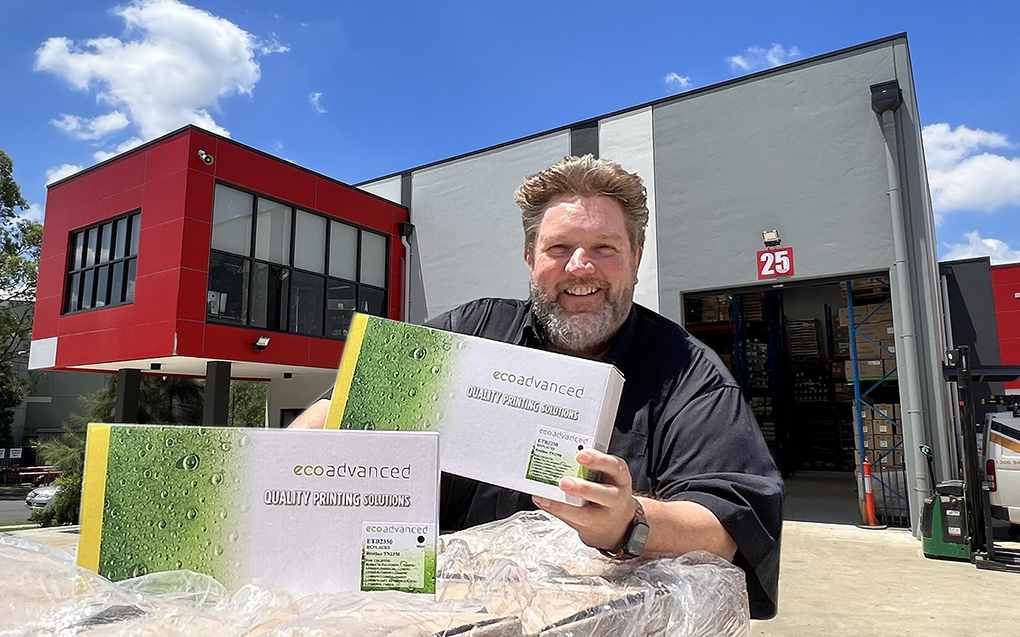
Change has become a friend over my lifetime. And it has taught me invaluable life skills too. Let me explain…
It’s amazing what challenges you can overcome when you just focus on priorities and don’t give up. We were forced to relocate our warehouse. We faced the toughest hurdles of my imaging industry business in 40 years.
The Kodak Experience
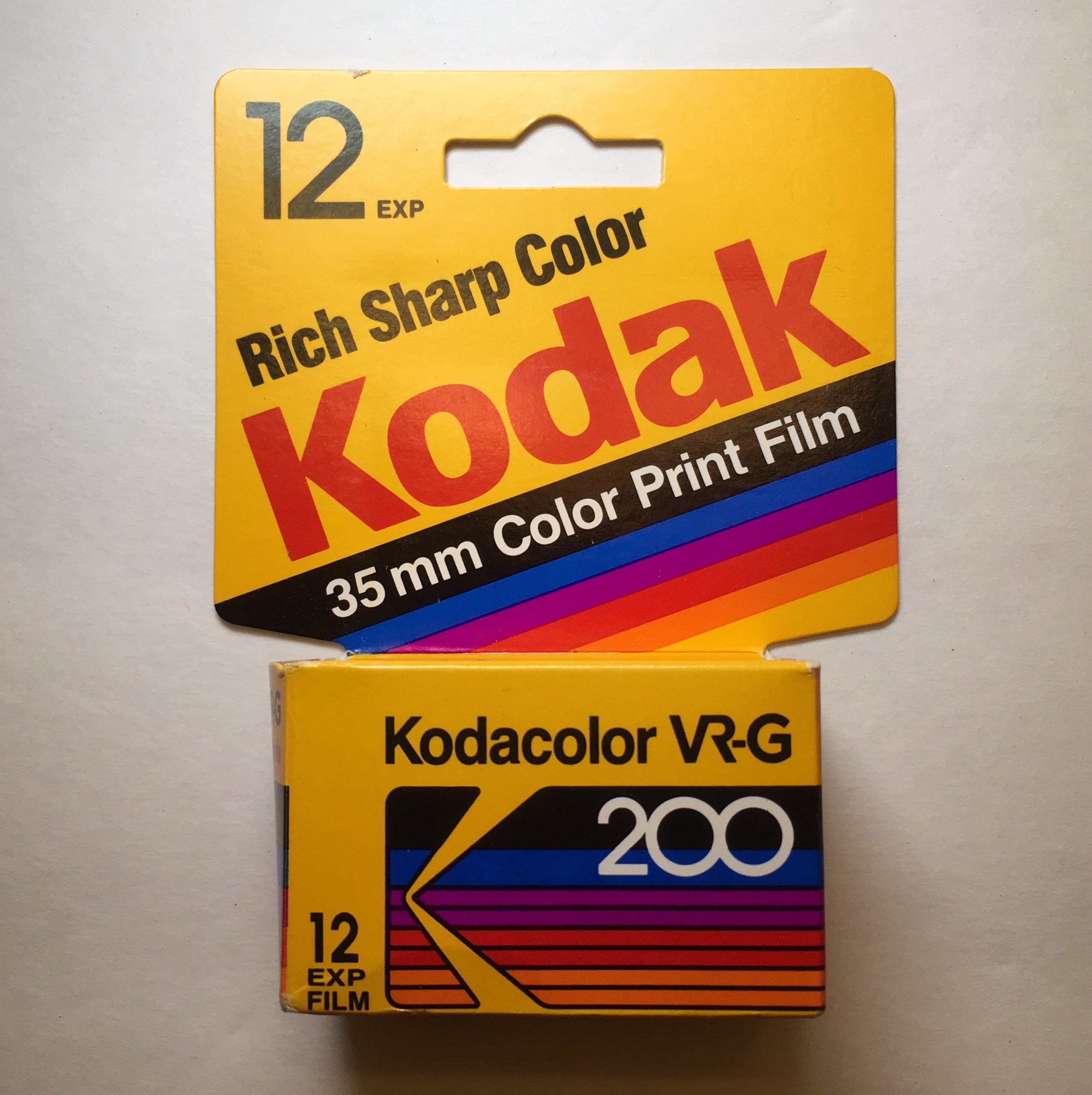 My background is in photographics. I started selling camera gear at a Kodak store in 1982 before moving to the Sydney head office to learn the photo lab side of the business. After a few years of learning from two industry legends, I became an area manager, looking after 3 stores that grew to 12 across Sydney. In those days Kodak owned the imaging industry and was in the top 5 most recognised brands worldwide, it was inconceivable that anything would change. Kodak was so large that the different divisions inside the company treated each other as competitors.
My background is in photographics. I started selling camera gear at a Kodak store in 1982 before moving to the Sydney head office to learn the photo lab side of the business. After a few years of learning from two industry legends, I became an area manager, looking after 3 stores that grew to 12 across Sydney. In those days Kodak owned the imaging industry and was in the top 5 most recognised brands worldwide, it was inconceivable that anything would change. Kodak was so large that the different divisions inside the company treated each other as competitors.
After a few years at Kodak, I moved over to Fuji which was the new aggressive kid on the block.
The Japanese did not enter the US market till the early 1980s, 100 years after Kodak. But they quickly took market share using clever marketing and offering better value. I learnt a lesson that I keep to this day:
Just because someone asks for something by brand doesn’t mean they actually want that brand.
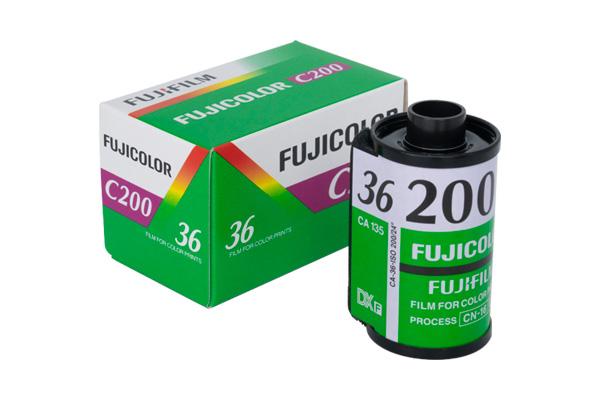 Kodak, like Coca Cola had become genericized, no longer just a brand. People would use the brand name Kodak to refer to film. As in, “Give me a roll of Kodak”. When in fact they were really asking for a roll of film. Some people really did want Kodak but most wanted the film and used the name Kodak. Same as Coke with Pepsi.
Kodak, like Coca Cola had become genericized, no longer just a brand. People would use the brand name Kodak to refer to film. As in, “Give me a roll of Kodak”. When in fact they were really asking for a roll of film. Some people really did want Kodak but most wanted the film and used the name Kodak. Same as Coke with Pepsi.
For Fuji that was a huge issue. How do you reprogram retailers’ brains to actually offer the customer a cheaper alternative when the customer asks for Kodak? Selling Fuji saved the customer money but also made the store more money. Sound familiar?
Awareness of Alternatives
In retail stores today I see customers say, “Give me an Epson 252” or “I need an HP 276X.” Time and time again I see store people robotically reach around and grab the OEM cartridge because that’s what the customer asked for. Some customers still don’t know there is an alternative brand, some don’t realise the savings, some had a bad experience with cheap compatibles and some expect that the retailer will tell them if there is a better deal to be had. Many are just asking for a new cartridge and don’t care about the brand. This happens mostly with new store people but surprisingly long-time industry veterans also. They just supply what the customer asked for without question by making assumptions.
By offering the alternative, one of four things will happen:
- The customer says, “Great you just saved me money.”
- The customer says, “No, my printer is still under warranty.” This opens the door for you to educate them and in turn, look knowledgeable.
- The customer says, “No, compatibles are rubbish.” You can then point out that your cartridges are not the same as the rubbish they have tried before.
- The customer remains unconvinced and buys the original. You then refine your argument to convince the next customer or try again the next time they come in.
Three of those four outcomes make the store more profitable and help build repeat sales. All four demonstrate that you are an expert and a builder of your future sales.
After Fuji, I took a year off, bought a motorbike and travelled around the USA from the Canadian border down into Mexico. I learnt you need to be open to ideas from the most unexpected areas.
There is always someone that has a better plan or technique or looks at something from a different perspective that you never conceived.
I saw this again years later when visiting cartridge stores across Australia. Small one-man store owners around the country would come up with brilliant ideas or refilling techniques that no factory expert or management teams had thought of before. Never become stale and close your mind off to fresh ideas and don’t feel threatened just because it wasn’t your idea.
The Polaroid Experience
 I returned to Kodak in Sydney for two more years before being headhunted over to Polaroid, and making the move from retail to wholesale. Polaroid was another top, worldwide, recognised brand name that was also a monopoly. Monopolies are great if you are in them but they also can make you lazy, they stifle ingenuity and make you vulnerable to rapid change.
I returned to Kodak in Sydney for two more years before being headhunted over to Polaroid, and making the move from retail to wholesale. Polaroid was another top, worldwide, recognised brand name that was also a monopoly. Monopolies are great if you are in them but they also can make you lazy, they stifle ingenuity and make you vulnerable to rapid change.
It was the first time I was measured on targets. Targets keep you focused but also can have negative side effects for the company. Salespeople were given targets to hit. If salespeople were ahead of target, they backed off and delayed extra sales till the next target period. Likewise, if they had no hope of making the monthly target, they held sales back to get a jump start on the next period. Be clever when setting incentives so there are no unforeseen negative effects.
At Polaroid, I learnt how stakeholders and shareholders can have a negative impact on sales.
If their interests don’t align exactly with the stores or salespeople then the conflict of interest has a negative impact. The Polaroid shareholders wanted to see sales growth. This lead to managers making short-term decisions just to meet the current targets. Smart long-term strategies were shelved in favour of just looking good right now and pulling sales forward with incentives. The strategy did not increase sales, it just stole tomorrow’s sales by filling the channel with stock and decreasing profits. The focus shifted to turnover instead of profitability. That strategy is never sustainable. Giving stock away at a discount just to make a sale now is a very short-term strategy. Offering a special to get someone to try something for the first time or change their buying habits is smarter.
This same misalignment of interests has, and is, repeating itself again and again in our industry and has plagued every cartridge franchise chain I know of.
In Australia, there have been nine cartridge specialty franchise groups that got to double-digit store numbers and one into the triple digits. All nine have either collapsed or have seen a decline in store numbers and profitability. All had one thing in common and that was a disconnect between the individual stores’ best interests and profitability and the management’s requirements and interests. The biggest issue is greed. That disconnect is tolerable when profits are high but when competition is aggressive and profits are tight, conflicts of interest ultimately destroy the group.
The old franchise model no longer works because the margins just won’t allow both the store owner and management to make good profits.
This is a global industry issue that is seeing the loss of many franchise store operators who are just walking away from the industry after being unable to sell their businesses. It’s not only a loss to the store owner, but it’s also a loss to the industry of experienced specialists that are being replaced by box movers.
Franchise operators need to become more profitable and unshackle themselves from high fees so they can compete on a more even playing field. There are now far better-operating alternatives to franchising that make store owners more profitable and sustainable. The factories are not helping the situation either. Selling direct to customers and driving profits down further is another short-term strategy that is hurting retailers.
Digital Transformation
Both Kodak and Polaroid were in the box seat in terms of brand names, market share and cash in the bank. Both were in the position to transition into digital and remain leaders, both started that transition but could not execute the change because the culture and systems were so entrenched. Both failed and filed for Chapter 11 bankruptcy. Kodak still holds valuable inkjet patents and they were licenced to Funai in 2015. Just one more American company was taken over by a Chinese newcomer that had fresh ideas.
Polaroid saw digital photography as a huge threat. Polaroid’s monopoly on instant photos was first challenged by Fuji’s instant film, but the bigger threat was the emerging digital market. At the time when the typical digital camera resolution was 0.5 megapixels, famous imaging people said, “Digital imaging has a use but it will never match conventional imaging on quality”. Today those statements look very foolish.
I graduated first place in photography from the University
of Technology in Sydney. I had spent hours learning, mixing and using chemicals to develop film and images. I built a large dedicated dark room and studio and was fully invested in conventional imaging.
The first time I used a digital camera in 1991, I was convinced that it was the future.
Polaroid’s success came from selling or giving away cameras and then making huge profits from the film.

It wasn’t the consumer cameras that produced the most images. Driver’s licences, passports and security ID badges were shot and printed on Polaroid film before being laminated. They also were the No.1 maker of videotape in the USA. They struggled to identify a revenue stream that could come from digital because consumer inkjet printers had not been launched yet and DVDs were replacing video. That changed in 1994 when Canon launched bubble jet printers and now there was a new profitable consumable in paper and inkjet cartridges.
The worst thing any employee could do at Polaroid was to defect to their biggest competitor, Fuji. That was until Polaroid started a 5th division called Digital in late 1994. The Digital division was now enemy No.1.
In the morning digital people turned right out of the lift (elevator) and conventional turned left, never to mix with each other.
Digital was seen as the common enemy by all the major photographic companies. Coincidently, the law had just changed and companies were now obligated to offer jobs to existing internal staff and not just advertise externally. Three positions in digital opened up and I applied without hesitation.
Two positions were immediately given to experienced digital people from outside the company and they were tossing up between two other external candidates. During my mandated job interview, I was placed behind the Digital Director’s office door so that no one from the conventional division could see me. I knew a lot about imaging but nothing much about computers and programming—the exact opposite of the existing digital people.
By pure chance, the conventional division sales director dropped by that office during my interview to talk to the Digital Director. He may have been the one to seal the digital job for me. He just came to the office door and poked his head in for a chat, I was on the other side of the door and obscured from sight.
The Digital director said, “I was thinking about interviewing James Douglas for the digital role we have.” He replied, “He just won salesman of the year again so that won’t be happening!”
In any case, I got the job, joining a team of people that had lots of digital experience but were lacking the understanding of what imaging customers really wanted. I knew what they wanted but not how to do it digitally. They knew how to do it digitally but not what to do. This is why it is so difficult for established companies to make transitions when there are major industry shifts. Change happens and you need to be open-minded, adapt or die.
The next years of rapid change were very exciting. New products were launched every month, growth was over 3000 percent and Polaroid Australia had the distribution of every leading digital imaging brand in virtually every imaging category. Over the next 3 years, I moved from digital sales to the Digital Product manager role and then became the Digital Marketing Manager but I was the only one in the entire Australian company that knew both divisions.
The conventional division was either not interested or it could not make the transition. That was around 50 – 60 people that were content to stay as they were and not make a change. I attended a Polaroid conference in San Diego and was blown away by what their Digital division was doing. They had assembled an all-star team of developers, engineers and scientists with a plan to dominate digital imaging. At dinner, I sat next to the guy that developed the floppy disk for IBM and the room was full of inventors and industry leaders in their specialty. Turnover was over US$3 billion and things looked great for Polaroid.
Only months later I noticed that the dream team of developers and scientists were individually splitting off in rapid succession. Winners don’t hang around waiting for others to deliver. In the end, poor management destroyed the company. Polaroid could have dominated digital, not just digital imaging. At the same time, Kodak was the first to patent a digital camera.
It was unthinkable both companies could lose dominance and collapse.
The Value of the Hand Shake
After Polaroid, I was doing consulting and sales work for Polaroid’s former joint venture digital partners. One of the projects in 1999 was to launch and sell Jet Tec inkjet cartridges in Australia. Jet Tec was the market leader in Europe and Dennis Haines from the UK had distribution agreements to launch the product in Australia and New Zealand.
Dennis had previously been the Digital Managing Director of Asia Pacific for Polaroid and had stayed in touch with the previous joint venture partners. Those partners failed to pay Dennis for the stock and failed to pay me for my time, so on a visit to Sydney, Dennis took a gamble and decided to leave the remaining stock in Australia with me, on the understanding that I would sell and pay off the stock as I collected money from sales. No contract … just a handshake. That deal is still good 24 years later.
I have had two other handshake agreements in my time in printer supplies. One with Horst Edelmeier from OCP was as rock solid as the one with Dennis. Old school people that understand and honour handshake agreements.
The other was with the CEO of a well-known retail chain, but sadly that handshake was worthless. I shouldn’t have been surprised because there was a long track record of other distributors, managers and suppliers like Turbon, Static, MSE, DCi & Clover, to name just a few that had been let down by this same person.
Knowing this information I was still shocked when it happened to us. At the last RemaxWorld show, I even had someone approach me to say “You have joined the club, we’ll all be at the bar later for a catch-up”.
The key takeaway is to remember and recognise who has let you or others down in the past and remember that in your future dealings. Leopards don’t change their spots.
When we entered the market in 1999 with Jet Tec inkjet cartridges, I gravitated to the area and people I knew best, the photographic and Apple stores. These two groups were the most demanding on quality because Apple stores serviced the main graphics Pro market and photo stores needed a pinpoint colour that only Jet Tec at that time could accommodate. As a result, they were insulated from the low-quality bottom feeders on price.
China Enters the Equation
The compatibles from China were not able to penetrate that market back then because of the high bar on quality and consistency. Once we had the majority of Apple and photographic chains in Australia on board we knew we could approach anyone without fear of rejection on quality. At that time every suburb had 2 – 3 computer stores and small office supply stores and it was easy to sign them up to sell cartridges so they could make higher margins.
The Chinese companies learned, improved and changed very quickly. Within 5 – 7 years, the quality gap the UK and German companies enjoyed had significantly narrowed. Competition on price became a bigger factor as the Chinese quality improved, so we added a new budget range to supply people that purchased on price.
The market matured. Apple took over running its own stores from the independents and stopped selling cartridges. The local corner photo and computer stores disappeared. They were pushed out by big box stores with photo print kiosks and discounted cameras and large displays of computers. All of that photo and computer knowledge has gone. You are hard-pressed to find anyone with any real knowledge now at any of the big box movers. Customers buy the printers that happen to be on sale, not necessarily the one that suits their needs. The rise in specialty cartridge stores in the first decade of the 2000s was a good replacement for the lost computer and photo stores. The second decade saw that growth stagnate and slowly start to decline but the third decade from 2020 has seen that decline accelerate rapidly.
Covid forced many customers to buy online. The buying decision is mainly made on price because the general public still does not distinguish quality levels in the aftermarket. They only see Original or Not Original brands. As more new entrants enter the market, their only way in is on price. This drives the price down and in turn, the quality goes down too. Poor printing experiences from low-quality aftermarket cartridges will continue to help OEM sales until the market can recognise the difference between budget and quality aftermarket cartridges. This mix of cheaper lower quality cartridges flooding the market sees customers going back to OEM and a reluctance to try aftermarket again.
A change in the business setup of cartridge specialty stores and the terms they operate under is needed now. I fear that specialty cartridge stores will go the way of the photo, computer and small stationery stores and all the service and knowledge will be lost. Each month we see store owners walk away with nothing, unable to sell their businesses because they are not profitable mainly due to being shackled to high monthly franchise fees.
Stores have to adapt to the new reality. We have seen retail store owners reject online sales handed to them because the margin is not high enough. That would be understandable if they were making huge margins with huge growth like in the old days but nowadays when retail is harder, a free sale is money no store should reject. Stores need to add more offerings, make good margins in areas of low competition, push the green message, free themselves from any franchise fees and accept low margins in the competitive space.
We don’t have any salespeople. We have relied on reputation and telling stores how it is. We believe buyers should be able to make an informed decision with all the facts when they purchase and it is up to us to offer them a range of choices in Quality, legal cover, and reliability to suit each buyer’s preferences. You get what you pay for.
The issues we face are buyers that say they want the best quality with the best legal cover but pay the same as the lower quality cartridges that infringe the OEM patents. We have a different product for those people. It is made harder for buyers when some distributors misrepresent the products they offer with claims of top quality and indemnity when in fact they are selling lower quality with non-existent indemnities. No wonder it’s hard for retailers. They get called and promised things daily. I covered this in a youtube video.
The result is, we do lose a lot of sales to competitors but many of those customers come back or turn to us when they have issues. Abraham Lincoln’s saying “You can fool all the people some of the time and some of the people all the time, but you cannot fool all the people all the time” is very true but the temptation when margins are tight is for some store owners to cut corners and want to believe they can buy budget and sell as premium.
Those people want to believe in unicorns and for a short time think they are making more money. It’s the same as gambling at the casino. You may have a short-term win but the odds are against you and if you keep gambling, you will loose.
Sooner or later we see those store owners tell us they were buying budget and upset their customers. They come back to us but the damage has already been done. Their volumes in aftermarket product have dropped and so has their profits and reputation. The problem is they burn customers who in turn just go back to the OEM and are lost to the aftermarket industry.
This is a customer retention game
If you have 100 customers, the aim is to retain as many of that 100 as possible. Every customer lost means you need to find new ones. Even selling the best products you will lose 1 -2 repeat sales. Customer errors are often blamed on you and you will lose some on firmware update issues. Why add poor quality and unreliability to the equation?
Store owners that buy budget cartridges and tell their customers they are selling premium wonder why business is tough. They sell 100 cartridges and lose say one to customer error, another five on chip firmware issues and three on quality and then focus on the 91 that they didn’t refund instead of worrying about the nine customers they won’t get repeat aftermarket sales on.
 If they stocked the store based on quality at a slightly higher price then they might only lose three customers. They get more up-to-date chips, better ink and toner, spend less time answering and fixing issues and get six more repeat sales. Over a few months, those six extra retained customers quickly become 36, 42, 72, and 100 and that makes a huge difference in margin and they have built a better more loyal customer base. Price buyers are never loyal to you, quality buyers are more stable.
If they stocked the store based on quality at a slightly higher price then they might only lose three customers. They get more up-to-date chips, better ink and toner, spend less time answering and fixing issues and get six more repeat sales. Over a few months, those six extra retained customers quickly become 36, 42, 72, and 100 and that makes a huge difference in margin and they have built a better more loyal customer base. Price buyers are never loyal to you, quality buyers are more stable.
You can sell budget, but you need to sell a lot of volume and you need low overheads. This is not the space many bricks and mortar retailers want to play in. Those retailers need to compete to their strengths of convenience, service, quality, support and environment. Trying to sell budget-priced products dressed up as premium is a short-term strategy and customers will find you out and the word will spread. However, there is nothing to stop you from offering a budget alternative and being honest with your customers as long as the customer knows that if they have an issue with a budget one, you can always upsell them to a quality aftermarket alternative that still saves them money and less than the OEM brand.
The Toughest Move of My Life
 Looking back on our recent warehouse move, I’m glad we jumped those hurdles now, but looking at it from the starting position, the obstacles looked too high and numerous. We’ve faced OEM threats from the introduction of killer chips, patent and copyright lawsuits and increasing firmware games. We’ve worked through factories stealing our customers and selling directly after you have done all the hard work and we have seen countless revolving-door competitor threats, not to mention the tough covid lockdown laws,
Looking back on our recent warehouse move, I’m glad we jumped those hurdles now, but looking at it from the starting position, the obstacles looked too high and numerous. We’ve faced OEM threats from the introduction of killer chips, patent and copyright lawsuits and increasing firmware games. We’ve worked through factories stealing our customers and selling directly after you have done all the hard work and we have seen countless revolving-door competitor threats, not to mention the tough covid lockdown laws,
But nothing was as bad as the forced warehouse move.
A normal warehouse move takes around 3 – 6 months. The 10 warehouses in our complex were given 1 month to not only find alternate suitable sites but also complete the moves. Three entire inner city suburbs in Sydney were rezoned from commercial to residential and the developers were having a field day. 17 years at the Waterloo warehouse was the longest of the three operational locations in our history but it was time to start chapter 4.
A consequence of eliminating large areas of warehousing in the inner city is a sharp increase in the pricing of the remaining storage space. That leads to the tenants looking a little further out of the city and rents in those areas increasing and tenants in that area being forced to move even further out. Repeat that scenario 2 – 3 times in a ripple effect across the whole of Sydney, as some businesses are forced to move to the outer fringes of the city as prices jump up rapidly.
When this happens the racking, storage, and moving companies are inundated with work and have longer and longer lead times. In our case, the fastest booking lead time was 3 – 4 weeks, which was time that we did not have. We had to find and secure a new warehouse first and then book. The real estate agents reported a major shortage of warehouse spaces available with no viable prospects coming up for the next 2 – 3 months and competition for the size we needed would be high.
The warehouses available were either way too large or way too small. We needed a Goldilocks solution right now.
It became clear very early on that we would not be able to make the deadline and be under threat of a major damages claim.
I was advised that if we were not off-site by the due date the developer could be successful in claiming $200 – $300K from each of the 10 businesses in the complex for cancellation of booked contractors and delays to development. The Business Council of Australia suggested two options if we could not find a new warehouse and move by the deadline:
- Option 1. Shut the business and permanently walk away.
- Option 2. Shut the business temporarily and put everything into storage.
Our agent gave us some comfort by stating not to worry, there was some flexibility and they would do everything they could to keep us as a client because of our 17-year, no-problem, clean record with them. They would get all their offices across Sydney to find a suitable warehouse. They did nothing other than offer a smaller warehouse at 2.5 times the cost.
After 1 month of daily searches online, driving around and agents’ fruitless suggestions that just wasted my time visiting totally unsatisfactory locations. In desperation started to make major compromises and I was able to locate a potential site. I signed up for it without delay. This news would mean I can start booking racking people, removalists, freight movers, phone, internet, electricians, signwriters, and the rest but we might lose some staff due to the distance. Best of all I could calm the agent and developer by giving them a more firm exit date.
1 week later I got the call that the warehouse was given away to another company that offered a larger starting lease and longer term. Without warning, it was gone, signatures and handshakes did not matter. I can still hear the agent saying “Cash is king, take me to court if you want”. I was back to square one and I started thinking about Option 1.
I received a call from one of my good customers saying don’t give up we need you, I rely on you. Sometimes you just need someone to give you that focus boost at the right time.
The “pile on” continued with the developer threatening a site lockout that would stop our business cold. The call was, No deliveries and No courier pickups, only removalists will be allowed on site. They erected a wire fence across the front of the property saying the gate would be locked without warning, just hurry up and get your things off-site.
Two weeks past the deadline, only 1 of the 10 businesses had left the site and our friendly agent had signed on with the developer to sell the units that were to be constructed. Overnight their personality flipped and turned nasty (don’t you just love real estate agents? ) We all started receiving daily unannounced harassment visits from either the agent or developer, many of which became quite hostile and aggressive. On one visit the agent ignored all logic, facts and reason and started screaming at us before waiving papers inches from our faces. I had to walk away before any more provocation made me do something I’d regret.
While this was going on, we discovered that our major factory supplier had once again decided to contact and sell directly to another one of our customers. Previously the factory had decided to sell directly to a retail chain that we had spent years developing and building a successful own brand. The overall result was the factory not only broke our trust but they lost market share. The service, respect and loyalty to this particular brand were eroded away and taken by competitors. The factory obviously had not learnt and was doing it again. Ironic when you sit at their supplier dinners during the RemaxWorld expo and the speeches are about how much they need and value their long-term distributors when at the same time they cannibalise the very same people and along with them, their own sales, often leading to lost volume for all.
Our first break came by pure chance.
I located another warehouse. The minute we walked through the roller door we knew we had found the needle in the haystack. I signed on the spot and rushed the paperwork through. I was finally able to lock in racking, and transport and started planning the move.
I passed on the good news to the developer that the racking people were arriving in 3 weeks to dismantle the pallet racking and we had a firm move date. The developer was not interested in waiting for legally authorised racking people and demanded that we look on Airtasker to get our racking pulled down and moved immediately.
In Australia, we have strict OH&S laws. Pallet racking needs to be installed and signed off on by qualified accredited people that rate each bay for the maximum weights that can be loaded onto the racking. Failure to do this means you have no insurance and penalties or worse still a racking collapse that risks lives.
The responses on Airtasker were as expected. Here is a quoted example: “I am happy to have a go at this. What tools are needed? I like to have a good go at things. I also have experience in doing, plastering, painting and a chef delivery driver among many other skills”
Obviously, this was not an option for us. The developer threw another tantrum failing to grasp that handling 3 – 4 meter long heavy metal beams 6 meters off the ground can be dangerous. Any accident would be terrible but also shut the site down. Even with a solid timetable to move the agent and developer kept up the daily harassment visits with threats of legal action and site lockouts.
We located and signed up for 12 months of extra storage to try and move some of the most valuable stock off-site in case of a lockout while waiting for the main racking people to come and for the new site to be available. Once again the plans were scuttled. The afternoon before the trucks were arriving to move 60 pallets of stock into storage, the new agents called to say the current tenant had not moved out and had decided to stay on. My response was “What current tenants?”
Two days later we called the agent to arrange to get the keys to the new warehouse. More bad news, they had not finished the painting and carpeting and there was going to be a 3-5 day delay. The movers and trucks were cancelled and re-booked once again but were not available on the days we needed so a further delay of 2 days was unavoidable.
 At 6am on moving day 1, the first semi-trailer arrived to take 20 pallets across town and loading went without a hitch. The day before, a truck had moved one of our forklifts across to Seven Hills so we could load and unload at both ends. The good start was short-lived because the movers had not shown up. They finally arrived four and half hours late and instead of 1 large truck, 1 medium truck and 4 men, we got 1 medium truck, a van and 3 three men with a bad attitude and not ready to do any moving.
At 6am on moving day 1, the first semi-trailer arrived to take 20 pallets across town and loading went without a hitch. The day before, a truck had moved one of our forklifts across to Seven Hills so we could load and unload at both ends. The good start was short-lived because the movers had not shown up. They finally arrived four and half hours late and instead of 1 large truck, 1 medium truck and 4 men, we got 1 medium truck, a van and 3 three men with a bad attitude and not ready to do any moving.
To supplement the missing truck I hired a truck myself and got someone in to help out. Picking up the truck was an issue in itself. After booking, the company changed the pickup location across town, then we couldn’t pick the truck up without a physical, plastic driver’s licence. The digital version on my phone is good enough for the police and government. It was not acceptable for Europcar, nor was any digital credit card. They insisted on plastic. We lost over 2 hours in traffic retrieving the plastic versions from home.
Famous last words, “Let’s just do one more load.” After another pre-dawn start and a long day packing and moving boxes we thought we’d maximise the truck rental and move another 8 pallets by hand into my mum’s garage just in case the crazy developer acted on his threat to lock the gate and block access. By this time it was around 10.30 pm and the plan was to enter the loaded truck through the front gates, turn onto a lawn and then reverse back to the garage and unload. The wheels sank into the soft grass and the truck wasn’t going to reverse. We only needed 60 cm to get back to the concrete and freedom but it was not going to happen.
I learnt quickly that 24-hour emergency towing advertisements are a joke. Company after company said, “Not at this hour.” “You’ll be lucky to get someone out now.” Eventually, we found a driver to winch the rental out after hand unloading the truck.
I knew any decision I made on what stock to dump and what stock to keep and move was going to be wrong. Every time we dispose of stock, someone inevitably calls the following week or month wanting to buy it. The pain comes when you think of the effort and cost to order, ship, customs clear and warehouse stock and then pay someone to dispose of it.
There also comes a time when people ask you to carry things when the minimum factory buy quality is some high number equalling 3 years worth of stock. The store’s customers finally upgrade their printers and you are left holding thousands of dollars worth of dead stock. If you have the space you just hold the stock and over the next year or so you are able to be the saviour when no one else has the stock. When you move you have to balance out paying more money to move the stock that may never sell or dump it. We disposed of around $80,000 of stock in the move, and when I say disposed of, I mean I paid someone more money to take $80K of perfectly good product away. The case was made worse because we had no time to run a moving sale and clear some of that stock. As predicted we have had several calls wanting to buy stock that has now gone to disposal.
Making the process more difficult was having someone attack our website and disable some of the products. The attack was unusual because it did not stop the website or steal data. It simply disabled two particular product ranges from displaying on the website. All the inkjets and toners that are covered by a factory indemnity and the range of Cartridge Universe branded cartridges that were developed for a new group of independent stores. Our web developers’ comments on this highly unusual targeted attack made me think of the movie JFK, when Donald Sutherlands’ character asked, “ Who stands to benefit?”
With our office, technical and studio spaces we made 3 assigned areas for the removalists to pick up and move items out. Items to move to the new location, items to go into storage and items for the skip bin. The new removalist that we bought in did a good job but inevitably things meant for moving ended up in the skip bin as they made their back-and-forth trips from the building including some of my studio photo equipment. I am still finding things missing now when I go to grab a particular piece of gear.
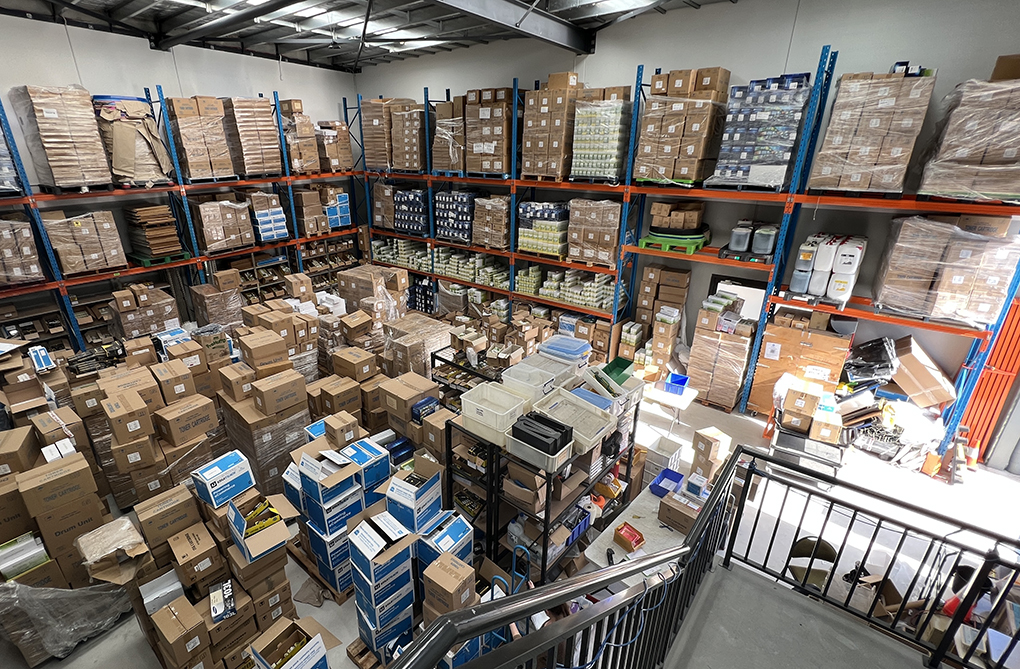
Once the racking from our old warehouse was fully installed we were able to calculate what extra racking we needed. The new place needed about double the pallet racking. Ordering and installation added another 3 weeks of lead time before we could load pallets up in the air.
Meanwhile, we placed stock into containers for off-site storage and had pallets on the ground in the centre of the warehouse. Being a new complex we needed to install ethernet cabling, security cameras, and phone and electrical points throughout the building while still trying to run the business. All this rushing was unnecessary. The developer pushed everyone off-site threatening they were going to knock the building down over our heads and needed to start demolition ASAP. Months on from the forced move, the old Waterloo warehouse complex is still standing untouched.
Competition is tough, margins are tight, firmware issues are at an all-time high, and factories are selling direct, yet there is still a place and an opportunity to make money, be different and do well in this climate.
An openness to change and adapt is needed because the market has shifted, the playing field has been altered and store owners that try to operate successfully using last decade’s systems and methods will die off the same as we have seen the specialty Photo stores, computer stores, small office and other cartridge stores if they don’t make changes now.
 You can contact James Douglas from Jet Tec Australia Pty Ltd at 25-1 Prime Drive, Seven Hills NSW 2147, Australia
You can contact James Douglas from Jet Tec Australia Pty Ltd at 25-1 Prime Drive, Seven Hills NSW 2147, Australia
Related:
Watch the video that features the warehouse move and the challenges that had to be overcome.
Here are some blogs written by James Douglas for you to read:
- On the Move Again
- Behind the Eight Ball
- Sales: the Good the Bad and the Ugly
- Remanufacturing the Customer’s Cartridges Instore
- Selling the Same Cartridge With a Huge Price Difference
- Short Term Gain for Long Term Pain
- Online Sales Outlook for Australia Market
Comment:
Please add your comments below about this feature, “On the Move Again.”

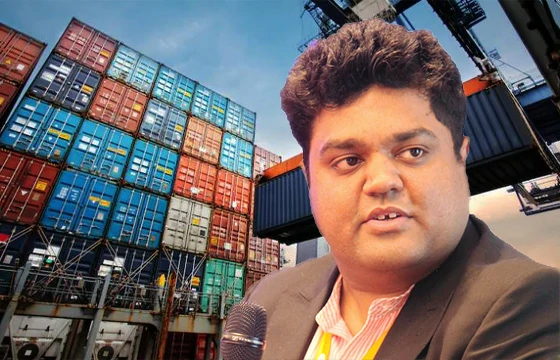

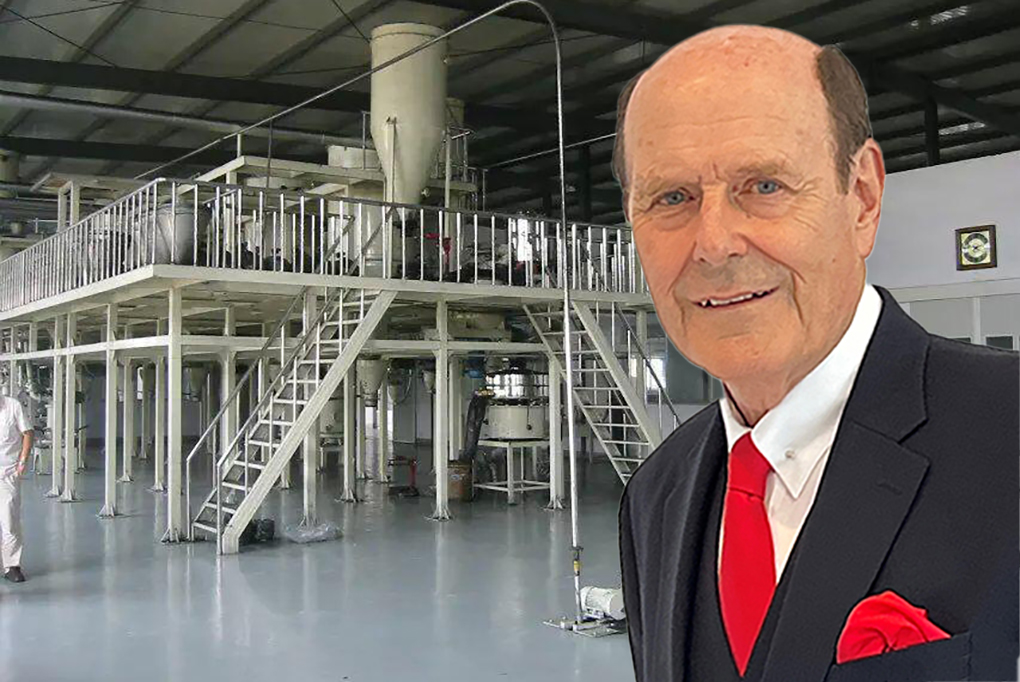

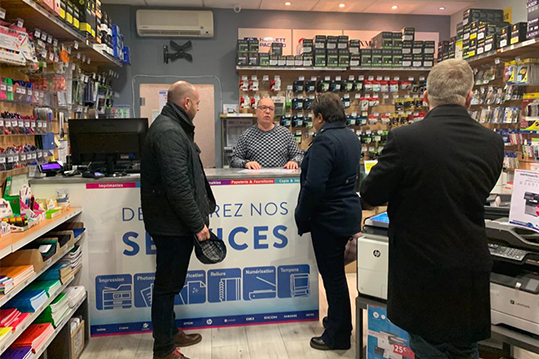
Leave a Comment
Want to join the discussion?Feel free to contribute!